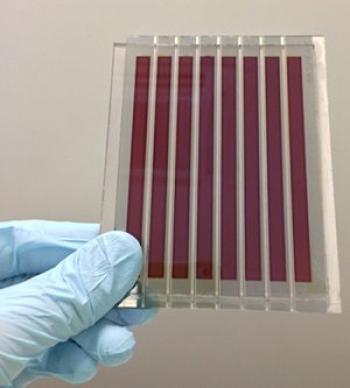 Intel Corporation, based in the US, is the world's largest semiconductor chip maker (based on revenue). The company supplies chips for PCs, mobile devices and more.
Intel Corporation, based in the US, is the world's largest semiconductor chip maker (based on revenue). The company supplies chips for PCs, mobile devices and more.
Intel is researching graphene to be used in future electronic devices. While the company hasn't released news regarding its graphene technologies in many years, it is believed it still carries out graphene R&D.
2200 Mission College Blvd
Santa Clara, CA 95054-1537
United States
European researchers reach graphene production breakthrough, under project GRAFOL
Researchers involved in the 10.6 million Euro European research project called GRAFOL have reportedly demonstrated a cost-effective roll-to-roll production tool capable of making large sheets of graphene on an industrial scale. The tool operates at atmospheric pressure and at reduced operating temperature, and is proclaimed by the researchers "the best route to low-cost manufacture".

Graphene-enhanced perovskite PV
The project team also believes that graphene could be used as a substitute for transparent indium tin oxide (ITO) electrodes used in organic LEDs (OLEDs), enabling flexible designs while helping reduce dependency on ITO. In addition, the team showed that it is possible to adapt the CVD method to grow graphene on 300 mm-diameter silicon wafers the standard size currently used in the semiconductor industry. That suggests the potential to integrate graphene in silicon photonics platforms, as well as flexible thin-film solar cells with transparent electrodes (like perovskite PVs, for example).
Intel: Graphene will be very important for semiconductors over the next few years
 Intel's CEO Brian Krzanic participated in Reddit's Ask Me Anything (AMA) session. One of the questions was "how does the development of Graphene change the game for Intel?"
Intel's CEO Brian Krzanic participated in Reddit's Ask Me Anything (AMA) session. One of the questions was "how does the development of Graphene change the game for Intel?"
Here's Brian's answer: "Graphene, carbon nano tubes.. and other 3-5 materials will become very important to semiconductors over the next few years... they will allow us to lower leakage and power while reducing geometries."
Intel is seeing great progress with graphene transistors, but it's still a few generations away
 During a Q&A session, Intel's CEO Brian Krzanich said that the company is working on graphene technologies and that their researchers are seeing some great progress. But graphene is still "a few generations away".
During a Q&A session, Intel's CEO Brian Krzanich said that the company is working on graphene technologies and that their researchers are seeing some great progress. But graphene is still "a few generations away".
In the best case scenario Intel sees graphene based products emerging in 2019, but that is rather optimistic.
Graphene may protect against electrostatic discharge
Professor Kaustav Banerjee from the University of California, Santa Barbara (UCSB) has been named winner of the 2011 international research award by the Electrostatic Discharge Association (ESDA) - following his visionary proposal to investigate the electro-thermal behavior of graphene electronics. The award includes a cash prize of $10,000.
Intel reports that they have already carried out some high-current measurements on the graphene devices prepared by Professor Banerjee's team and were amazed at the current carrying capacity of a monolayer or bilayer of carbon atoms.